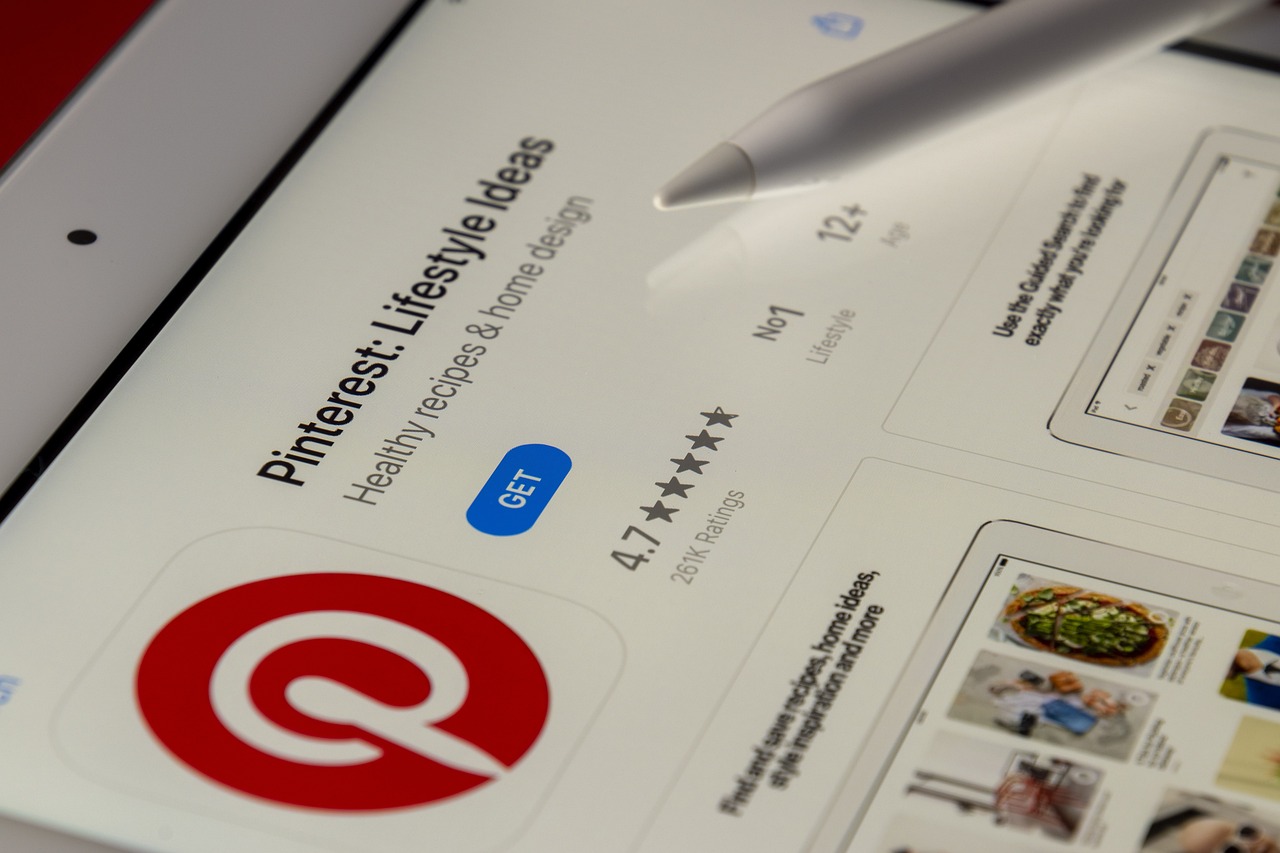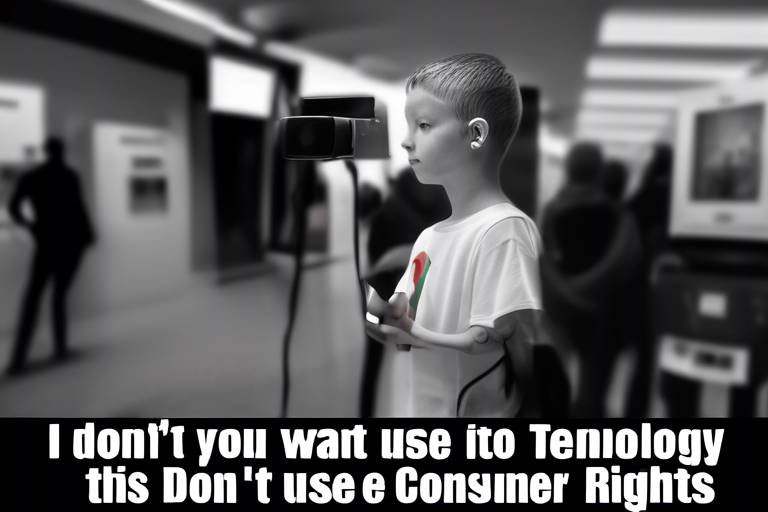The Effects of Social Media Algorithms on User Experience
In today's digital landscape, social media algorithms play a pivotal role in shaping our online experiences. These algorithms are not just complex mathematical formulas; they are the invisible hands guiding what we see, engage with, and ultimately, how we interact with the world around us. Imagine walking into a massive library where the books are not organized by genre or author, but rather by what you have read before or what you might like based on your previous choices. This is essentially how social media algorithms function—they curate our feeds, prioritize certain content, and influence our interactions. But, what does this mean for us as users? Are we truly in control of our social media experience, or are we merely pawns in a game dictated by algorithms?
To grasp the full impact of social media algorithms, we must first understand what they are and how they operate. At their core, social media algorithms are designed to analyze user behavior and preferences, allowing platforms to serve content that is most likely to engage users. They consider various factors such as likes, shares, comments, and even the time spent on a post. By doing so, these algorithms aim to create a personalized experience that keeps users coming back for more. However, this personalization comes with its own set of challenges and implications.
On the brighter side, social media algorithms can significantly enhance user engagement. One of the key benefits is the ability to deliver personalized content that resonates with individual users. Imagine scrolling through your feed and instantly finding posts that align with your interests—be it travel, cooking, or fitness. This tailored approach not only keeps users engaged but also fosters a sense of community among like-minded individuals.
Algorithms excel at improving content discovery, making it easier for users to find new creators and topics that spark their interest. For example, if you often engage with cooking videos, the algorithm will prioritize similar content, introducing you to creators you may not have encountered otherwise. This discovery process is akin to wandering through a vibrant marketplace where every stall offers something unique and exciting, enhancing the overall user experience.
Social media platforms leverage algorithms to provide recommendations based on user behavior and preferences. When you see a "Suggested for You" section, it's not just random; it's a calculated effort to enhance your satisfaction. These recommendations can lead to a richer browsing experience, allowing users to uncover content that genuinely interests them. However, the effectiveness of these suggestions can vary, and sometimes they may miss the mark, leading to frustration.
Another significant positive impact of algorithms is their ability to connect users with similar interests, fostering the formation of online communities. Whether it's a Facebook group dedicated to vintage car enthusiasts or an Instagram account showcasing plant care tips, algorithms help bring people together. This connection can lead to meaningful interactions, support networks, and friendships that transcend geographical boundaries.
Despite their advantages, algorithms are not without their drawbacks. One of the most concerning issues is the creation of echo chambers, where users are only exposed to content that reinforces their existing beliefs and opinions. This can lead to a distorted perception of reality and a lack of exposure to diverse perspectives. Furthermore, the spread of misinformation is another critical challenge posed by algorithmic curation, as sensationalized content often gains more visibility than factual information.
User feedback is essential in refining algorithms to enhance user satisfaction. Social media platforms actively seek input from users to improve content delivery. This feedback loop allows algorithms to evolve and adapt, ensuring that they remain relevant and effective in meeting user needs.
Platforms frequently adjust their algorithms based on user feedback, leading to changes in content visibility. These adjustments can have a significant impact on user experience, as they determine what content is prioritized in feeds. For instance, if a particular type of post receives negative feedback, the algorithm may lower its visibility, while content that garners positive engagement may be promoted.
The dynamic nature of algorithms also affects content creators, who must adapt their strategies to align with these changes. As algorithms evolve, creators need to stay informed about trends and best practices to maintain visibility and engagement. This constant adaptation can be challenging but is crucial for success in the competitive social media landscape.
- What are social media algorithms?
Social media algorithms are systems that analyze user behavior to curate and prioritize content on platforms, aiming to enhance user engagement.
- How do algorithms impact user experience?
Algorithms can improve user experience by delivering personalized content but can also create echo chambers and spread misinformation.
- How can users provide feedback on algorithms?
Users can provide feedback through platform settings, reporting features, and engagement metrics that inform algorithm adjustments.

Understanding Social Media Algorithms
Social media algorithms are the unsung heroes of our digital interactions, quietly working behind the scenes to curate the content we see each day. But what exactly are they? Simply put, social media algorithms are complex sets of rules and calculations that platforms like Facebook, Instagram, and Twitter use to determine what content appears in a user's feed. They analyze a plethora of data points, including user behavior, preferences, and interactions, to deliver a personalized experience.
These algorithms function on the principle of relevance. They aim to show users the most pertinent content based on their past behavior. For instance, if you frequently engage with posts about cooking, the algorithm will prioritize similar content in your feed. This not only keeps users engaged but also enhances the overall user experience. However, the intricacies of these algorithms can be quite fascinating and sometimes perplexing. They consider factors such as:
- User Engagement: How often you like, share, or comment on posts.
- Content Type: Whether you prefer videos, images, or text-based posts.
- Recency: Newer posts are often prioritized over older ones.
- Relationships: Content from friends and family is typically given more weight.
Understanding how these algorithms work is crucial for users and content creators alike. For users, it means being aware of how their interactions shape their feed and influence what they see. For content creators, it’s about adapting to these algorithms to ensure their content reaches a wider audience. The constant evolution of these algorithms can feel like a game of chess, where both users and creators must strategize their moves to stay relevant.
It's also essential to recognize that while algorithms aim to enhance user experience, they can inadvertently create a filter bubble. This phenomenon occurs when users are only exposed to information that aligns with their existing beliefs, limiting their perspective. As a result, it becomes crucial for users to actively seek diverse content to broaden their horizons.
In summary, social media algorithms are powerful tools that shape our online experiences. They tailor content to our preferences, enhancing engagement and satisfaction. However, as users, we must remain vigilant and proactive in exploring a variety of viewpoints to avoid the pitfalls of algorithmic curation.

Positive Impacts on User Engagement
When it comes to social media, the algorithms behind the scenes are like the magic wands that shape our online experiences. They work tirelessly to sift through mountains of content, ensuring that what we see aligns with our interests and preferences. This personalized touch is one of the most significant positive impacts of social media algorithms on user engagement. Imagine walking into a bookstore where every book on the shelf is tailored to your taste; that’s how algorithms function in the digital realm.
One of the standout benefits of these algorithms is their ability to deliver personalized content. By analyzing our interactions—what we like, share, and comment on—algorithms curate a feed that feels like it was made just for us. This not only keeps users engaged but also increases the likelihood of them returning for more. For instance, if you frequently engage with posts about travel, the algorithm will prioritize similar content, making your scrolling experience more enjoyable and relevant.
Moreover, algorithms enhance content discovery, allowing users to stumble upon new creators and topics that resonate with their interests. This is akin to discovering a hidden gem in a bustling city; it’s exciting and refreshing! Users can explore a wide array of content that they might not have encountered otherwise. For example, if you follow a few cooking accounts, the algorithm might introduce you to a new food blogger or a unique recipe that perfectly matches your culinary interests.
Algorithms often improve the discovery of new content and creators, helping users find topics and communities that resonate with their interests. This section examines how this discovery process works. When you engage with a specific type of content, the algorithm takes note and begins to surface similar posts. This mechanism not only keeps your feed lively but also connects you with a broader community of like-minded individuals. It’s the digital equivalent of finding your tribe!
Social media platforms utilize algorithms to suggest content based on user behavior, preferences, and interactions. These recommendations can feel almost uncanny at times, as if the platform knows you better than you know yourself! This subheading discusses the effectiveness of these recommendations in improving user satisfaction. When users receive suggestions that align closely with their interests, it enhances their overall experience, making them feel understood and valued.
Algorithms can facilitate the formation of online communities by connecting users with similar interests. Think of it as a virtual meet-up where everyone shares a common passion. We will analyze how these connections enhance social interactions and foster engagement. For instance, a user interested in sustainable living can easily find groups and pages dedicated to that cause, leading to meaningful discussions and collaborations. This sense of community not only boosts user engagement but also creates a supportive environment where ideas can flourish.
In conclusion, while social media algorithms can sometimes receive criticism for their downsides, the positive impacts on user engagement are undeniable. By personalizing our feeds, enhancing content discovery, and fostering community connections, these algorithms play a crucial role in enriching our online experiences. So, the next time you find yourself lost in a scroll, remember that there’s a complex system working behind the scenes, making sure you enjoy every moment of it!
- How do social media algorithms determine what I see?
Algorithms analyze your interactions, such as likes, shares, and comments, to curate content that aligns with your interests. - Can I influence the algorithm?
Yes! Engaging with content you enjoy will signal the algorithm to show you more of that type of content. - What are the downsides of social media algorithms?
While they enhance personalization, they can also create echo chambers and limit exposure to diverse viewpoints. - How often do social media platforms update their algorithms?
Platforms frequently adjust their algorithms to improve user experience and adapt to changing user behaviors.

Enhanced Content Discovery
When you scroll through your social media feed, have you ever stopped to think about how you stumbled upon that hilarious meme or that insightful article? It's all thanks to the sophisticated algorithms that power these platforms. is one of the most remarkable benefits that social media algorithms bring to the table. These algorithms are designed to sift through vast oceans of content and present you with the gems that align with your interests and preferences.
Imagine walking into a massive library where every book is a different piece of content. Without a guide, you might feel overwhelmed and lost. However, algorithms act as your personal librarian, skillfully recommending books that match your taste. They analyze your past interactions, the types of content you engage with most, and even your browsing habits to curate a selection that feels tailor-made for you. This process not only saves time but also enhances your overall experience by connecting you with content you genuinely enjoy.
Moreover, enhanced content discovery isn't just about finding what you like; it’s also about exploring new horizons. Algorithms can introduce you to creators and topics you might never have encountered otherwise. For instance, if you frequently engage with travel posts, the algorithm might suggest a lesser-known travel blogger who shares stunning photos from off-the-beaten-path destinations. This not only broadens your interests but also enriches your social media experience by fostering a sense of community around shared passions.
To illustrate this further, consider the following table that outlines how algorithms enhance content discovery:
| Aspect | How Algorithms Enhance It |
|---|---|
| Personalization | Algorithms analyze user behavior to deliver tailored content recommendations. |
| Exploration | Users are introduced to new topics and creators based on their interests. |
| Engagement | Relevant content increases user interaction and satisfaction. |
| Community Building | Algorithms connect users with similar interests, fostering social interactions. |
In essence, the power of algorithms in enhancing content discovery is undeniable. They not only streamline the process of finding content that resonates with you but also encourage you to step outside your comfort zone and explore new ideas. However, it’s crucial to remain aware of how these algorithms operate. While they can elevate your social media experience, they can also create a bubble if you're not careful. So, the next time you find yourself engrossed in a post, take a moment to appreciate the technology that made it possible.
In conclusion, enhanced content discovery through social media algorithms transforms the way we interact with online platforms. By personalizing our feeds and introducing us to new content, these algorithms play a pivotal role in shaping our digital experience.

Recommendations and Suggestions
When it comes to navigating the vast ocean of social media, recommendations and suggestions driven by algorithms can feel like a lifebuoy for users. Imagine diving into a sea of content where every wave is tailored to your interests—sounds amazing, right? Algorithms analyze your past behavior, preferences, and interactions to curate a personalized feed that resonates with you. This means that the more you engage with content, the better the suggestions become. However, it’s essential to keep in mind that these recommendations are not just about entertaining you; they can also foster deeper connections with communities and topics that matter.
One of the most exciting aspects of algorithmic recommendations is their ability to introduce you to new creators and content that you might not have discovered otherwise. For instance, if you frequently engage with cooking videos, the algorithm may suggest channels that focus on niche cuisines or unique cooking techniques. This not only broadens your horizons but also enriches your experience by connecting you with like-minded individuals. In essence, the algorithm acts as a guide, helping you navigate through the overwhelming amount of information available online.
However, it’s important to be aware of the limitations of these recommendations. While they can enhance user satisfaction, they can also create a bubble where you only see content that aligns with your existing beliefs and interests. This is where user feedback becomes crucial. By actively engaging with the content you see—liking, sharing, or even hiding posts—you help the algorithm refine its suggestions. The more feedback you provide, the more accurately the algorithm can tailor your experience.
Furthermore, social media platforms are constantly evolving their algorithms to improve user experience. They often release updates based on user feedback and changing trends. This means that what works today might not work tomorrow. Staying informed about these changes can give you an edge in maximizing your engagement. For instance, some platforms now prioritize video content over static images, so adapting your content consumption habits accordingly can enhance your overall experience.
In conclusion, while algorithms can be powerful tools for enhancing user engagement through recommendations and suggestions, users must remain vigilant. By actively participating in the content curation process and providing feedback, you can help shape a more enriching social media experience. Remember, your interaction is what fuels these algorithms, making your voice a crucial part of the conversation.

Building Online Communities
In today's digital age, social media algorithms have become the backbone of how we connect, share, and engage with others. One of the most fascinating aspects of these algorithms is their ability to facilitate the formation of online communities. Imagine walking into a bustling café where everyone shares your interests; that’s essentially what algorithms do for us online. They sift through mountains of data to connect like-minded individuals, making the vast internet feel a bit more intimate and personalized.
Algorithms analyze user behavior, preferences, and interactions to create a tailored experience that encourages users to engage with content that resonates with them. For instance, when you like a post about gardening, the algorithm takes note and begins to show you more gardening-related content, along with similar posts from other users who share that passion. This is not just a random occurrence; it’s a carefully curated experience designed to keep you engaged and foster a sense of community.
Moreover, these algorithms can help users discover new communities that they might not have encountered otherwise. Think about it: without algorithms, you might miss out on niche groups that focus on your hobbies or interests. Here’s how this process generally works:
- Interest Identification: The algorithm identifies your interests based on your interactions, such as likes, shares, and comments.
- Content Curation: It curates content that aligns with those interests, showcasing posts from users and pages that you may not follow yet.
- Community Connection: By connecting you with others who share similar interests, it fosters engagement within those communities.
Furthermore, the social media landscape thrives on the notion of community building. For instance, platforms like Facebook and Reddit have groups dedicated to specific topics where users can share experiences, seek advice, or simply chat about their passions. These communities often become a second home for many, providing a safe space where individuals feel understood and valued. The role of algorithms in this context is crucial, as they actively promote these groups to users who are likely to engage, thus enhancing the overall user experience.
However, while algorithms can bring people together, they can also create silos. Users might find themselves in echo chambers, where they only engage with content that reinforces their existing beliefs. This phenomenon can be detrimental, as it stifles diverse perspectives and can lead to polarized communities. Therefore, it’s essential for users to be mindful of their engagement patterns and seek out a variety of voices within their online interactions.
In conclusion, social media algorithms are powerful tools that can significantly enhance the way we build and engage with online communities. They help us connect with others who share our interests, foster meaningful interactions, and create a sense of belonging. However, it’s vital to navigate these digital spaces thoughtfully, ensuring that we remain open to diverse perspectives and experiences. After all, the beauty of online communities lies in their diversity and the richness of conversations that emerge from them.
1. How do social media algorithms find communities for users?
Algorithms analyze user behavior, such as likes and shares, to identify interests and suggest relevant communities.
2. Can algorithms create echo chambers?
Yes, algorithms can lead to echo chambers by primarily showing users content that aligns with their existing beliefs, limiting exposure to diverse perspectives.
3. How can users ensure they engage with diverse content?
Users can follow a variety of accounts, join different groups, and actively seek out content that challenges their viewpoints to maintain a balanced perspective.
4. What role do user interactions play in community building?
User interactions, such as comments and shares, signal to algorithms which content is engaging, helping to foster and grow online communities.

Negative Consequences of Algorithmic Curation
While social media algorithms can enhance user experience in many ways, they also come with a set of negative consequences that can significantly impact how we interact with content online. One of the most concerning effects is the creation of echo chambers. These are environments where users are exposed predominantly to information that reinforces their existing beliefs and opinions, leading to a narrow worldview. Imagine walking into a room where everyone agrees with you, and the only conversations you hear are those that mirror your thoughts. This phenomenon can limit critical thinking and reduce exposure to diverse perspectives.
Another troubling outcome of algorithmic curation is the proliferation of misinformation. Algorithms prioritize content based on engagement metrics, often promoting sensational or controversial posts that can mislead users. For instance, a shocking headline may attract more clicks and shares, regardless of its truthfulness. This tendency can create a landscape where false information spreads rapidly, leaving users scrambling to discern fact from fiction. To illustrate this, consider the following table that outlines the impact of misinformation on user behavior:
| Impact of Misinformation | Effect on Users |
|---|---|
| Increased Anxiety | Users may feel overwhelmed by conflicting information. |
| Distrust in Media | Users may become skeptical of all news sources. |
| Polarization | Users may become more entrenched in their beliefs. |
Additionally, the algorithmic focus on engagement can lead to a devaluation of quality content. Content creators may feel pressured to produce sensational or clickbait material to capture attention, rather than focusing on delivering valuable, informative, or nuanced content. This shift can dilute the overall quality of information available on social media platforms and frustrate users seeking meaningful engagement.
Moreover, the algorithms often prioritize popular content, which can marginalize niche voices and perspectives. Smaller creators or those discussing less mainstream topics may struggle to gain visibility, leading to a homogenized content landscape that overlooks unique insights and diverse viewpoints. As users, we may find ourselves trapped in a cycle of repetitive content that fails to challenge our thinking or inspire new ideas.
In conclusion, while social media algorithms have the potential to enhance our online experiences, we must remain vigilant about their negative consequences. From echo chambers and misinformation to the marginalization of quality content, these issues highlight the need for a more thoughtful approach to algorithm design and user engagement. As consumers of information, we should strive to seek out diverse sources and challenge our own perspectives to counteract these algorithmic pitfalls.
- What are echo chambers? Echo chambers are environments where individuals are only exposed to information that reinforces their existing beliefs, limiting their perspective.
- How do algorithms contribute to misinformation? Algorithms often prioritize content based on engagement, which can lead to the promotion of sensational or misleading information.
- What can users do to avoid the negative effects of algorithms? Users can actively seek diverse sources of information and engage with a variety of content to broaden their perspectives.

The Role of User Feedback
User feedback is like the compass guiding social media algorithms on their journey to improve user experience. Without this vital input, algorithms would be like ships adrift at sea, struggling to find their destination. Platforms continuously seek user opinions, likes, shares, and comments to refine their content delivery mechanisms. This feedback loop is crucial; it not only helps in enhancing user satisfaction but also ensures that the content users see aligns closely with their interests and preferences.
When users engage with content—whether by liking a post, commenting on a video, or sharing an article—they send signals back to the platform. These signals are analyzed to understand what resonates with the audience. For instance, if a user frequently interacts with travel content, the algorithm recognizes this and adjusts accordingly, prioritizing similar posts in their feed. This dynamic relationship between the user and the algorithm creates a more personalized experience that keeps users coming back for more.
Moreover, platforms often employ sophisticated methods to gather feedback. They may use direct surveys, monitor engagement metrics, or analyze behavioral patterns. This multifaceted approach ensures that they capture a comprehensive view of user preferences. For example, a platform might notice a sudden spike in engagement on posts about mental health, prompting them to prioritize similar content across the board. This responsiveness is vital in today's fast-paced digital landscape, where user interests can shift rapidly.
Another interesting aspect of user feedback is its role in adjusting algorithm parameters. Social media platforms are not static; they evolve based on the data they collect. If a particular type of content leads to negative feedback, such as increased reports of misinformation or user dissatisfaction, the algorithm can be tweaked to minimize the visibility of such content. This adaptability is essential for maintaining a healthy online environment, where users feel safe and engaged.
It's also worth noting that the impact of user feedback extends beyond just individual experiences. When platforms listen to their users, they foster a sense of community and trust. Users are more likely to engage when they feel their opinions matter. This engagement can lead to a richer, more vibrant online community where users actively participate in discussions and share diverse perspectives. However, it's essential for platforms to strike a balance; if they only cater to popular opinions, they risk creating an echo chamber that stifles diversity of thought.
To illustrate how user feedback influences algorithm adjustments, consider the following table that highlights key feedback mechanisms and their outcomes:
| Feedback Mechanism | Outcome |
|---|---|
| User Likes | Increased visibility of similar content |
| User Comments | Insight into user sentiment and preferences |
| Content Shares | Indication of popular topics and engagement |
| Surveys and Polls | Direct input on user satisfaction and desired features |
In conclusion, user feedback is not just a component of the algorithmic ecosystem; it is the lifeblood that keeps it thriving. By actively listening to their users, social media platforms can create a more engaging and satisfying experience. This continuous cycle of feedback and adjustment not only enhances individual user experiences but also fosters a healthier online community overall.
- How does user feedback influence social media algorithms?
User feedback helps algorithms understand user preferences, leading to more personalized content delivery. - What types of feedback do platforms collect?
Platforms collect likes, shares, comments, and direct survey responses to gauge user satisfaction. - Can algorithms change based on negative feedback?
Yes, negative feedback can prompt platforms to adjust their algorithms to minimize the visibility of undesirable content. - Why is user engagement important for social media platforms?
User engagement indicates satisfaction and helps platforms create a vibrant online community.

Adjusting Algorithm Parameters
In the ever-evolving landscape of social media, adjusting algorithm parameters is not just a technical necessity; it's a vital strategy for enhancing user experience. Social media platforms are constantly analyzing vast amounts of user data to fine-tune their algorithms. This process involves examining a variety of factors that contribute to how content is displayed and prioritized on users' feeds. Think of it as a chef tweaking a recipe—each ingredient (or parameter) needs to be just right to create a satisfying dish that keeps users coming back for more.
One of the primary ways platforms adjust these parameters is by monitoring user engagement metrics. For instance, if a particular type of content—like videos or memes—receives significantly more likes and shares, the algorithm may prioritize similar content in the future. This dynamic adjustment ensures that users are consistently presented with content that resonates with their interests and preferences. However, this raises an important question: how do platforms determine which parameters to adjust?
Typically, platforms utilize sophisticated data analytics tools that track user behavior over time. They analyze patterns such as:
- Time spent on posts
- Interaction rates (likes, comments, shares)
- Content type preferences (videos, articles, images)
By assessing these metrics, platforms can make informed decisions on how to tweak their algorithms. For example, if users are spending more time watching short videos, the algorithm may adjust to feature more of that content, thereby enhancing user satisfaction and engagement.
Moreover, platforms often conduct A/B testing to evaluate the effectiveness of different algorithmic changes. This involves showing different segments of users varying content feeds to see which version garners better engagement. The results from these tests can lead to significant adjustments in how content is prioritized. This method not only helps in refining the algorithm but also ensures that the user experience is continuously optimized, much like how a gardener prunes plants to encourage healthier growth.
However, it’s important to note that these adjustments are not just beneficial for the users; they also serve the interests of content creators. As algorithms evolve, creators must adapt their content strategies to align with these changes. For instance, if the algorithm favors video content, creators who primarily produce written articles may need to diversify their offerings to maintain visibility. This creates a cycle of adaptation and innovation, where both users and creators benefit from the algorithm's adjustments.
In conclusion, adjusting algorithm parameters is a complex yet essential process that shapes the social media landscape. By continuously monitoring user behavior and engagement, platforms can refine their algorithms to enhance user experience and foster a vibrant online community. As users, we may not always see the behind-the-scenes work, but the effects are clear in the content we consume daily.
Q: How often do social media platforms adjust their algorithms?
A: Social media platforms can adjust their algorithms frequently, sometimes even daily, based on user feedback and engagement metrics.
Q: What factors influence algorithm adjustments?
A: Factors include user engagement rates, content type preferences, and overall trends in user behavior.
Q: Can users provide feedback on the algorithms?
A: Yes, many platforms encourage user feedback through surveys and feedback forms to help improve their algorithms.
Q: How do algorithm changes affect content creators?
A: Content creators must stay informed about algorithm changes and adapt their strategies to maintain visibility and engagement with their audience.

Impact on Content Creators
The landscape of content creation has transformed dramatically in recent years, primarily due to the influence of social media algorithms. These algorithms are like the gatekeepers of visibility, determining which content gets seen and which gets buried. For content creators, this means adapting to an ever-evolving system that can feel as unpredictable as a game of chance. Have you ever posted something you were excited about, only to see it flop? That’s the power of algorithms at work, shaping the fate of creators based on factors that often seem out of their control.
One of the most significant impacts on content creators is the need to constantly evolve their strategies. As algorithms are refined, creators must stay ahead of the curve to ensure their content reaches the intended audience. For instance, platforms like Instagram and TikTok frequently update their algorithms, prioritizing different types of content, such as video over static images or promoting user-generated content. This shift often requires creators to rethink their approach and invest time in learning new skills, such as video editing or storytelling techniques.
Moreover, engagement metrics have become crucial. Creators are now more focused than ever on likes, shares, comments, and watch time. These metrics not only influence algorithmic favor but also serve as a measure of success. A creator’s ability to engage their audience can significantly affect their visibility. The pressure to produce content that resonates with viewers can be overwhelming, leading to a cycle of stress and burnout. It's almost like running a never-ending race where the finish line keeps moving!
Additionally, the algorithms often favor established creators, making it harder for newcomers to break through. This can result in a vicious cycle where only a few voices dominate the landscape, while fresh talent struggles to gain traction. To combat this, many creators are turning to collaboration, pooling their audiences to increase visibility. This not only helps in expanding reach but also fosters a sense of community among creators, which can be incredibly rewarding.
Another challenge is the risk of misinformation and the spread of content that may not align with the creator's values. Algorithms can inadvertently promote sensational or misleading content due to higher engagement rates, making it essential for creators to remain vigilant about the type of content they produce and share. They must navigate the fine line between creating engaging content and ensuring it is accurate and responsible.
In summary, the impact of social media algorithms on content creators is profound and multifaceted. While they offer opportunities for enhanced visibility and engagement, they also present challenges that require adaptability and resilience. As creators continue to navigate this dynamic environment, the ability to innovate and connect with audiences will be the key to thriving in the digital age.
- How do social media algorithms affect content visibility?
Social media algorithms determine which posts are displayed to users based on their interests and interactions, impacting how visible a creator's content is. - What should creators focus on to succeed with algorithms?
Creators should focus on producing high-quality, engaging content that resonates with their audience and encourages interaction. - Can new creators succeed despite algorithm challenges?
Yes, new creators can succeed by collaborating with others, engaging with their audience, and staying informed about algorithm changes.
Frequently Asked Questions
- What are social media algorithms?
Social media algorithms are complex mathematical formulas that determine what content is shown to users on their feeds. They analyze user behavior, interactions, and preferences to curate a personalized experience, ensuring that users see the most relevant posts and updates.
- How do algorithms impact user engagement?
Algorithms can significantly boost user engagement by presenting content that aligns with individual interests. This personalized approach encourages users to interact more with the platform, leading to longer session times and increased community participation.
- Can algorithms create echo chambers?
Yes, one of the downsides of algorithms is their potential to create echo chambers. By primarily showing users content that aligns with their existing beliefs, algorithms can limit exposure to diverse perspectives, which may hinder open discussions and critical thinking.
- How does user feedback influence algorithms?
User feedback is crucial for refining algorithms. Social media platforms often collect data on user interactions and satisfaction, which helps them adjust algorithm parameters to improve content delivery and enhance the overall user experience.
- What role do recommendations play in social media?
Recommendations are a key feature of social media algorithms. They suggest new content, accounts, or groups based on a user's past behavior, making it easier for users to discover new interests and communities that resonate with them.
- How can content creators adapt to algorithm changes?
Content creators need to stay informed about algorithm updates and trends. By understanding how algorithms prioritize content, creators can adjust their strategies—like optimizing post timing, improving engagement, and creating high-quality content—to maintain visibility and reach their audience effectively.
- Are there any negative effects of algorithmic curation?
Yes, while algorithms improve content discovery, they can also lead to issues like misinformation and reduced diversity in viewpoints. Users may be exposed to misleading content if algorithms prioritize engagement over accuracy, which can have serious implications for public discourse.
- What is enhanced content discovery?
Enhanced content discovery refers to the ability of algorithms to help users find new and relevant content that they may not have encountered otherwise. This process connects users with topics and creators that align with their interests, enriching their social media experience.



















